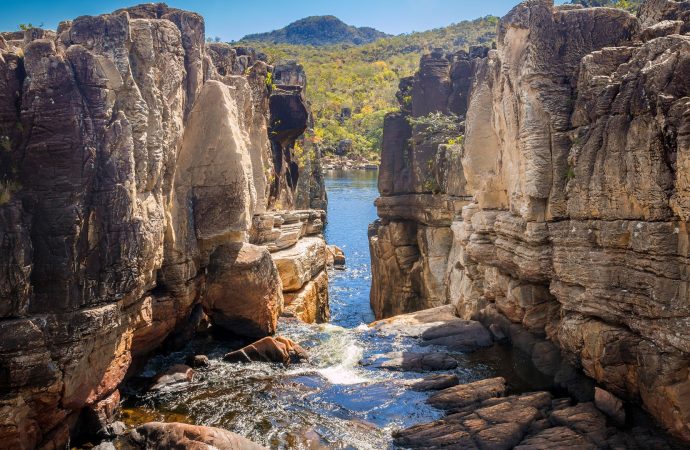Brazil is often celebrated for its lush rainforests, vibrant cities, and stunning beaches, but few realize that it also boasts remarkable desert landscapes perfect for adventure seekers. A Brazil desert safari offers a unique way to explore these lesser-known regions, combining the thrill of extreme sports with the beauty of untouched nature. not the allure
Brazil is often celebrated for its lush rainforests, vibrant cities, and stunning beaches, but few realize that it also boasts remarkable desert landscapes perfect for adventure seekers. A Brazil desert safari offers a unique way to explore these lesser-known regions, combining the thrill of extreme sports with the beauty of untouched nature. not the allure of Brazil’s deserts, providing a comprehensive guide for those looking to embark on an unforgettable journey.
Geographical Information
Brazil is home to several distinct desert regions, each offering a unique experience. The most famous of these is the Lençóis Maranhenses National Park in Maranhão, characterized by its stunning white sand dunes interspersed with crystal-clear lagoons. Another notable desert area is the Sertão, an arid region in the northeastern part of the country known for its rugged beauty and cultural richness.

Image by yandex.com
The climate in these deserts varies significantly. Lençóis Maranhenses, for instance, experiences a tropical climate with a distinct wet season from January to June, creating the park’s iconic lagoons. In contrast, the Sertão is semi-arid with irregular rainfall and can be extremely hot during the day and cool at night. The best time to visit these regions is typically from July to September, when the weather is more predictable, and the lagoons are at their fullest.
Cultural Insights
The deserts of Brazil are not just about natural beauty; they are also rich in cultural heritage. The local communities, many of which are indigenous, have preserved their traditions and customs over centuries. Festivals and events are integral to desert life, with celebrations like the Bumba-Meu-Boi in Maranhão showcasing vibrant music, dance, and folklore.
Indigenous influences are evident in various aspects of daily life, from traditional crafts to culinary practices. Visitors can immerse themselves in these cultures by participating in community tours, attending local festivals, and sampling traditional dishes. Understanding and respecting these cultural nuances enhances the overall desert safari experience.

Image by yandex.com
Must-Visit Attractions
When planning a desert safari in Brazil, several attractions should not be missed. In Lençóis Maranhenses, the main draw is the surreal landscape of shifting dunes and azure lagoons. Key spots within the park include Lagoa Azul and Lagoa Bonita, known for their striking beauty and perfect swimming conditions.
The Sertão offers a different kind of allure with its historical landmarks. Towns like Canudos and Juazeiro do Norte are steeped in history and offer insights into Brazil’s past conflicts and religious traditions. Additionally, the São Francisco River, which runs through the Sertão, provides opportunities for boat tours and exploration of riverine ecosystems.
For those looking to venture off the beaten path, places like the Jalapão region offer pristine wilderness and adventure activities such as kayaking, hiking, and wildlife spotting. Each destination within Brazil’s deserts presents unique attractions that cater to diverse interests and adventure levels.
Activities and Experiences
A desert safari in Brazil is synonymous with thrilling activities and unforgettable experiences. Dune bashing, a popular sport in Lençóis Maranhenses, allows visitors to drive 4×4 vehicles over the towering sand dunes. Sandboarding, akin to snowboarding but on sand, is another exhilarating activity that attracts adrenaline junkies.
Wildlife enthusiasts can embark on eco-tours to observe unique flora and fauna adapted to desert conditions. The Sertão, for example, is home to various endemic species, and guided tours provide educational insights into these unique ecosystems. Night safaris and stargazing sessions are also highly recommended, offering the chance to witness the desert’s nocturnal life and the breathtaking clarity of the night sky.
Travel Tips
Planning a successful desert safari requires careful consideration of several factors. Accommodation options range from basic camping facilities to luxury eco-lodges, catering to different preferences and budgets. For those seeking comfort, the Barra Grande and Atins areas near Lençóis Maranhenses offer charming pousadas (guesthouses) with all necessary amenities.
Transportation can be challenging due to the remote nature of these regions. Hiring a local guide or joining a tour group is often the best way to navigate the deserts safely and efficiently. Packing essentials include sun protection (hats, sunscreen, sunglasses), lightweight clothing, ample water, and snacks. It’s also advisable to carry a first-aid kit and any personal medications.
For a more traditional desert experience, camel rides are available in certain areas, such as Lencois Maranhenses. These gentle giants provide a unique way to traverse the dunes, offering a serene and memorable ride through the desert Booking your desert safari tour in advance ensures that you get the best options for activities and accommodations. It also allows for better planning and budget management.
Dealing with Extreme Weather
Brazil’s desert regions can experience extreme weather conditions, including intense heat and sudden rainstorms. Being prepared with appropriate gear and staying informed about weather forecasts is important for a safe and enjoyable trip.

Image by yandex.com
Conclusion:
Brazil’s desert regions offer a unique and unforgettable travel experience. From the stunning landscapes of Lencois Maranhenses to the rugged beauty of Jalapao, these areas provide a perfect blend of adventure and natural beauty.
















